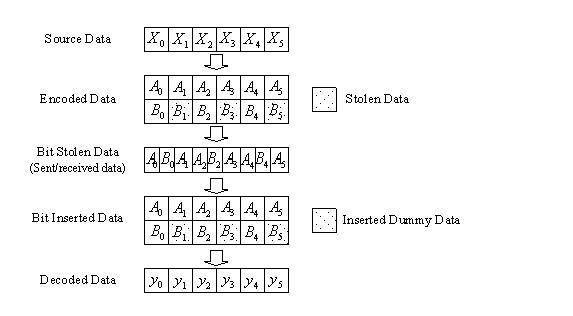|
微波射频仿真设计 |
|
|
微波射频仿真设计 |
|
| 首页 >> Ansoft Designer >> Ansoft Designer在线帮助文档 |
|
System Simulator > Depuncturer, 802.11a (DPUNC11A)

Limits

Notes1. This model can be used to perform “depuncturing”, according to IEEE 802.11a standard. 2. The DATA field, composed of SERVICE, PSDU, tail, and pad parts, shall be coded with a convolutional encoder of coding rate R = 1/2, 2/3, or 3/4, corresponding to the desired data rate. The convolutional encoder shall use the industry-standard generator polynomials, g0 = 133z and gl = 133z, of rate R =1/2, please refer to the COD11A model. Higher rates are derived from it by employing “puncturing.” Puncturing is a procedure for omitting some of the encoded bits in the transmitter (thus reducing the number of transmitted bits and increasing the coding rate) and inserting a dummy “zero” metric into the convolutional decoder in the receiver in place of the omitted bits. The “puncturing” and “depuncturing” procedure are illustrated in Fig.1a and Fig 1b.
Fig.1A The “puncturing” and “depuncturing” procedure for coding rate R = 3/4.

Netlist FormDPUNC11A:NAME n1 n2 [CODING=val] [RIN=val] [ROUT=val] Netlist ExampleDPUNC11A:1 1 2 CODING = 2 References1. [1] IEEE Std 802.11a, Part 11: “Wireless LAN Medium Access Control (MAC) and Physical Layer (PHY) specifications: High-speed Physical Layer in the 5 GHz Band,” ISO/IEC 8802-11:1999/Amd 1:2000(E). 2. [2]J. Terry and J. Heiskala, Proakis, OFDM Wireless LANs: A Theoretical and Practical Guide, Sams Publishing, 2002. HFSS视频教程 ADS视频教程 CST视频教程 Ansoft Designer 中文教程 |
|||||||||||||||||||||||||||||||||||||
|
Copyright © 2006 - 2013 微波EDA网, All Rights Reserved 业务联系:mweda@163.com |
|